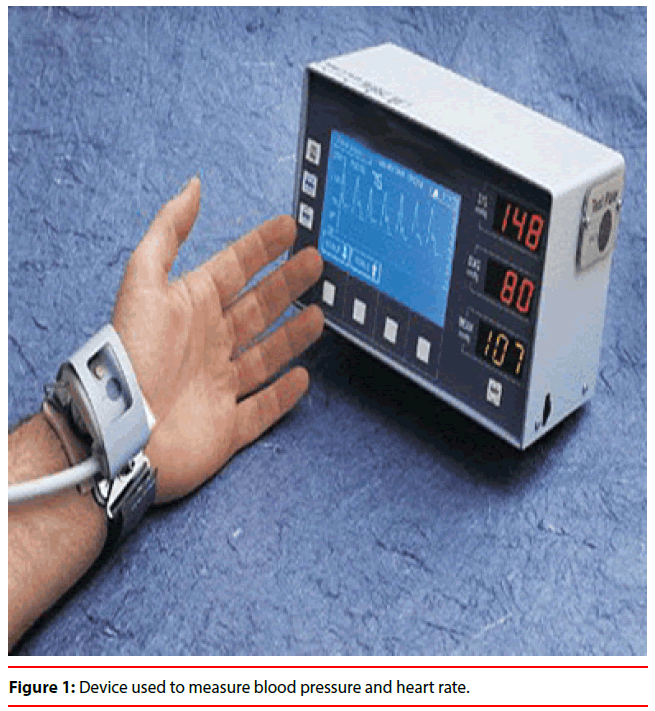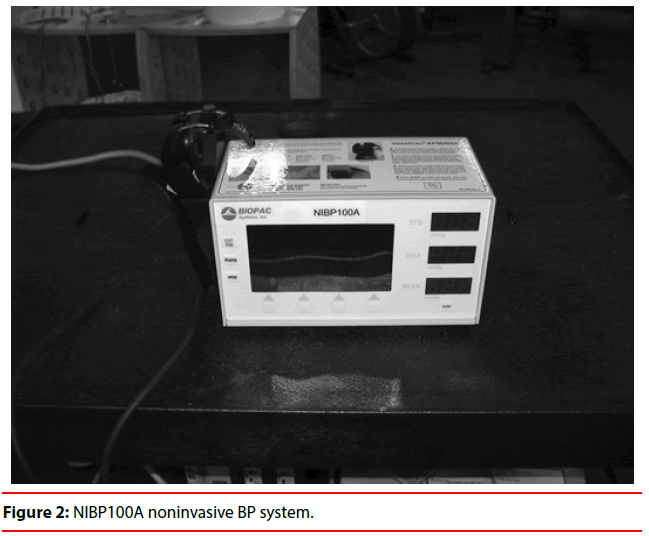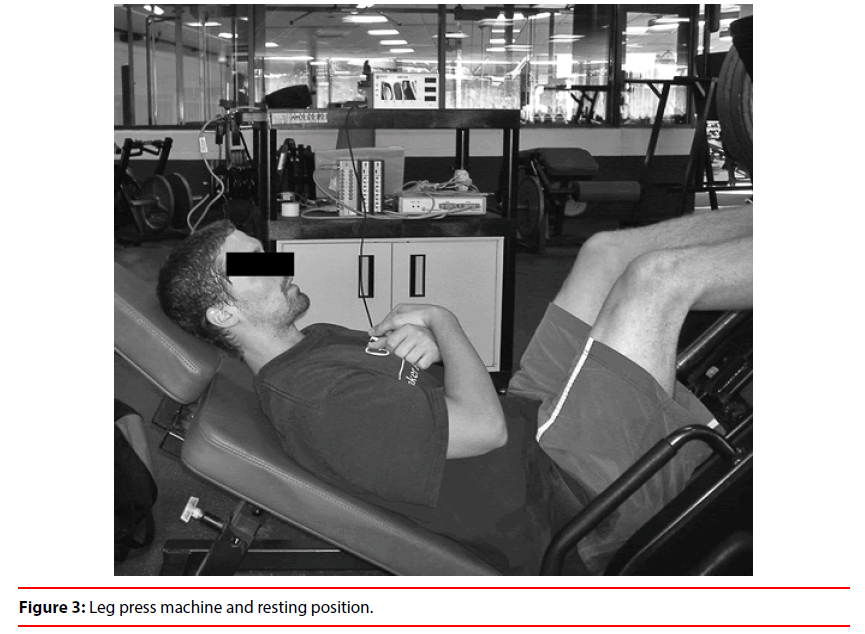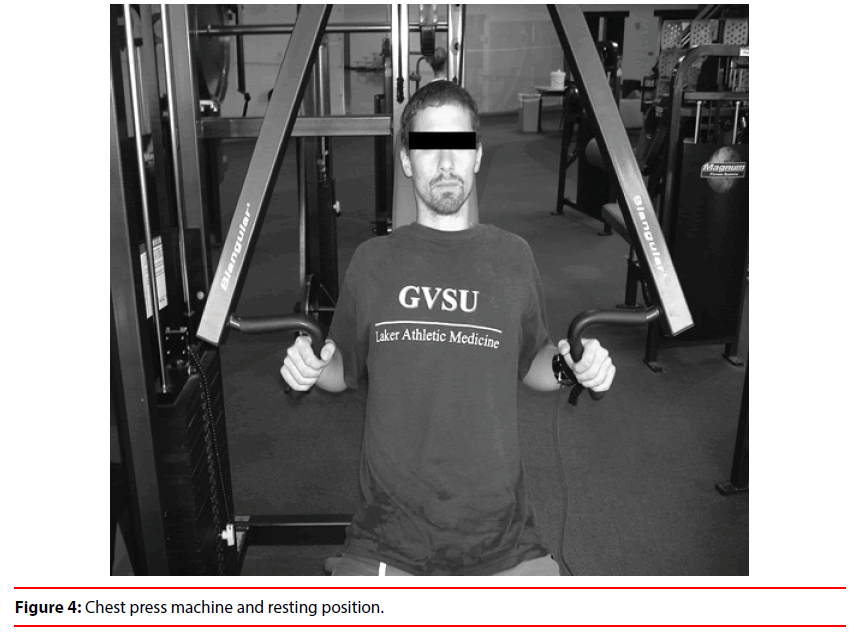Effects on Heart Rate and Blood Pressure of Weightlifting and Breathing Technique
- Corresponding Author:
- Kavouras Periklis
Department of Sports Science and Physical Education
Democritus University of Thrace, University in Komotini, Greece
E-mail: perikavo@gmail.com
Abstract
Weight training is a method commonly used to increase strength. The purpose of this investigation was to examine the effect of breathing technique during weight training on heart rate (HR) and blood pressure (BP). After completing a health history questionnaire, 30 subjects (16 men: 21.25 6 1.21 years, 180.26 6 2.36 cm, 84.31 6 19.32 kg; and 14 women: 21.29 6 2.37 years, 170.08 6 2.15 cm, 137.36 6 62.31 kg) were familiarized and tested for an estimated 1 repetition maximum, on the chest press and leg press lifts using each of the 2 breathing techniques, Hold Breath (HB), and controlled breathing. Lifts were examined using each breathing technique with 1 set of 10 repetitions on separate days. Data were collected during the push phase on average of 3.72 times per set and again at 1 and 5 minutes post lift. Resting, during the lift (peak, average); 1-minute and 5-minute post lift BP; and HR values were measured using the NIBP100A noninvasive BP system (Biopac Systems, Inc), for both breathing technique within each lift. The HB technique posted higher but statistically insignificant (p, 0.05) values for systolic BP (p=0.420), diastolic BP (p=0.531), and HR (p=0.713) than the controlled breath technique. The HB technique used in this investigation produced minimal elevations in HR and BP and appears to be safe when performing the chest press and leg press lifts at a moderate resistance. Education on proper weight training techniques can help limit unwanted risks during these exercises. So in this I am giving the review on the article published by Lepley AS and Hatzel BM on Effects of weightlifting and breathing technique on blood pressure and heart rate.
Keywords
Heart rate; Blood pressure; Breathing; Clinical examination
Introduction
The present investigation is attempting to identify potential factors leading to significant increases in BP by identifying the influence on breathing technique during various lifting techniques. It is felt that many participants in resistance training may be inducing a Valsalva mechanism while participating in the activity [1]. Valsalva is identified as a forceful exhalation on a closed glottis. This action has a significant impact on increasing intrathecal pressure leading to an increase in venous pressure and increased pressure response that creates a significant risk factor for cardiac pathology. It is not in our interest to look at the cardiovascular effects anaerobic activity has over periods rather during the one time lift. It has already been shown by Fleck that resistance training does not result in adaptations of the cardiovascular system. The present investigation has attempted to identify an appropriate breathing technique that will allow participation at moderate levels of resistance without producing significant increases in BP and HR. The Hold Breath (HB) technique has been developed in this study to mimic a Valsalva technique while eliminating a dangerous increase in pressure [2]. The HB and Controlled Breathing (CB) techniques will be compared when using the chest press and leg press resistance training techniques. It is hypothesized that with any form of holding one’s breath and containing pressure, such as in the HB and Valsalva techniques, BP will rise significantly.
The Procedures and Methods of Research
The device was used to measure blood pressure and heart rate is NIBP100A. The device measured these values when they were sitting down and doing the exercises. The device measured the blood pressure every 12 seconds, in each set 3 times (Figures 1 and 2).
In order to find the ideal load they had to perform for their research on the basis of 1RM, it was done in the following formula: the weight that lift/[1.0278 – (0,0278 × the number of repetitions)]. At each of the 2-3 days, the samples had to perform 2 sets of 10 repetitions on each exercise (chest press and leg press), incorporating every breathing technique that day, which breathing techniques were randomly selected at each exercise [3,4].
The ideal load chosen for the survey was 60% of the 1RM for each research. The samples also did not fail during the sets and finished just reaching 10 reps.
Also, the data was analyzed with the program SPSS software 14.0 (SPSS, Chicago, IL).
Regarding blood pressure and heart rate measurements, just 10 repetitions were told in the samples to remain resting.
Heart rate and blood pressure were measured and recorded continuously for 1 and 5 minutes after exercise and watch until they return to their resting prices. Samples could do the second breathing technique only when the heart rate and blood pressure returned to rest. These were used in all technical iterations.
Depending on the degree of difficulty the loaddisplacement increased or reduced the amount of cargo until it reached in 1 maximum repeat for everyone. Each subsequent session must be after 24 to 48 hours of rest.
Once the initial blood pressure and heart rate measurements were done, the samples were ready to start 2 loads lifting with different breathing techniques.
Also the weight used for the study was estimated by 1RM which was 60% of 1RM for each sample [5,6].
Which was chosen as the ideal because, according to previous research and findings, under 60% of 1RM the strength gains are insignificant in loads less than 60% of 1RΜ?
In 60%, therefore, they ended up performing 1 maximum repetition with a duration of 3 to 5 seconds until completion of the repetition and a break of 3 to 5 minutes between repetitions to minimize fatigue so achieve the 3 - 6 sets of a maximum repeat to determine the ideal load [1].
A maximum load was requested from the subject to start the number of iterations (Figures 3 and 4).
The Results of the Research
Systolic pressure with breathing technique was 157.9 mm Hg and with controlled breathing was 142.4 mm Hg. Diastolic pressure with Breath-Holding was 93.1 mm Hg and with controlled breathing was 88.2 mm Hg. The heart rate also with breath-holding was 88.4 pulses per minute and with controlled breathing were 83.3 pulses per minute. Wherever breathing technique, therefore, recorded higher but statistically insignificant values for systolic and diastolic pressure as well as for heart rate.
Measurements were not made between the different exercises but only between breathing techniques at each exercise. These values, together with the peak and those of 1 and 5 minutes after exercise, were not compared between the loads and breathe lift values Table 1.
| Value | Holding breath | Controlling breathing |
|---|---|---|
| Heart rate | 88.4 pulses per minute | 83.3 pulses per minute |
| Systolic Pressure | 157.9 mm Hg | 93.1 mm Hg |
| Diastolic Pressure | 93.1 mm Hg | 88.2 mm Hg |
Table 1: Measurements made between the different exercises.
Discussion on Research
Many authors of previous research have identified a significant increase in pressure when using a Valsalva technique when attempting to lift a load. There is a lot of uncertainty about the breathing technique in the literature. Many investigations suggest that this technique would show significant increases in heart rate and blood pressure during lifting. Although, there were no statistically significant differences, even observed an increasing trend with a percent change of 190% in systolic pressure and 150% in diastolic pressure using a Valsalva technique.
This high percentage compared with breathing technique showed the change in systolic pressure by 89.8 and diastolic by 88.1 and this suggests that there is probably a big difference in blood pressure rise. It is assumed initially that individuals who participated in resistance training would have significant increases in systolic and diastolic blood pressure and heart rate.
They also believe that the breathing technique is more common and was therefore considered in the present study. The difference was that this research contained instructions for the participants not to carry the load but to push the weight while keeping their breath and exhale as soon as strength is exercised on weight which may not have been done by the participants.
Huggett also detected percentage changes of 40.0% in systolic pressure and 40.4% in diastolic pressure when samples were trained to avoid Valsalva.
Conclusion
Breathing technique, therefore, increases blood pressure more than the controlled breathing technique. However, both methods appear to be safer than Valsalva techniques.
▪ Personal views on research
The equipment used in this research is unreliable and insufficient. There is an incomplete examination of alternative respiratory techniques with respect to Valsalva. As this is the only research done so far that examines the hold breathing method, so further research should be done later on to have progressively solid information on this system.
The sample should be given more information about the measurements that should be made so that the probability of error, and especially the alternative hold breathing technique, was smaller. The sample also had to be calibrated above the final measurements to be chosen with more care and specifically for lifting loads and breathing techniques because the increase in blood pressure levels in extreme values and heart rate is also very dangerous for the sample themselves. However, In order to achieve the better results we needed to investigate or to examine, a significant factor that might have to be differentiated would be to increase the lift load and increase the intensity of resistance training. As the blood pressure and heart rate monitor recorded measurement problems.
As unique research on this technique, it is obvious that it will also have many points to challenge. This study found that with the use of a breathing valve there were no large increases in both the blood pressure and the heart rate in these two exercises. The further analysis of data was important and more control groups are needed to do further study.
References
- Lepley AS, Hatzel BM. Effects of weightlifting and breathing technique on blood pressure and heart rate. J Strength Cond Res 24(8), 2179-2183 (2010).
- Gotshall RW, Gootman JB, Fleck SJ, et al. Noninvasive characterization of the blood pressure response to the double-leg press exercise. J Exerc Physiol 2, 1-6 (1999).
- Brzycki M. Strength testing: Predicting a one-rep max from a repsto-fatigue. J Phys Educ Recreation Dance 64(1), 88-90 (1993).
- Wilson MF, Sung BH, Pincomb GA, et al. Exaggerated pressure response to exercise in men at risk for systemic hypertension. Am J Cardiol 66(7), 731-736 (1990).
- MacDougall JD, Tuxen D, Sale DG, et al. Arterial blood pressure response to heavy resistance exercise. J Appl Physiol 58(3), 758-790 (1985).
- Gottdiener JS, Brown J, Zoltick J, et al. Left ventricular hypertrophy in men with normal blood pressure; relation to exaggerated blood pressure response to exercise. Ann Intern Med 112(3), 161-166 (1990).



